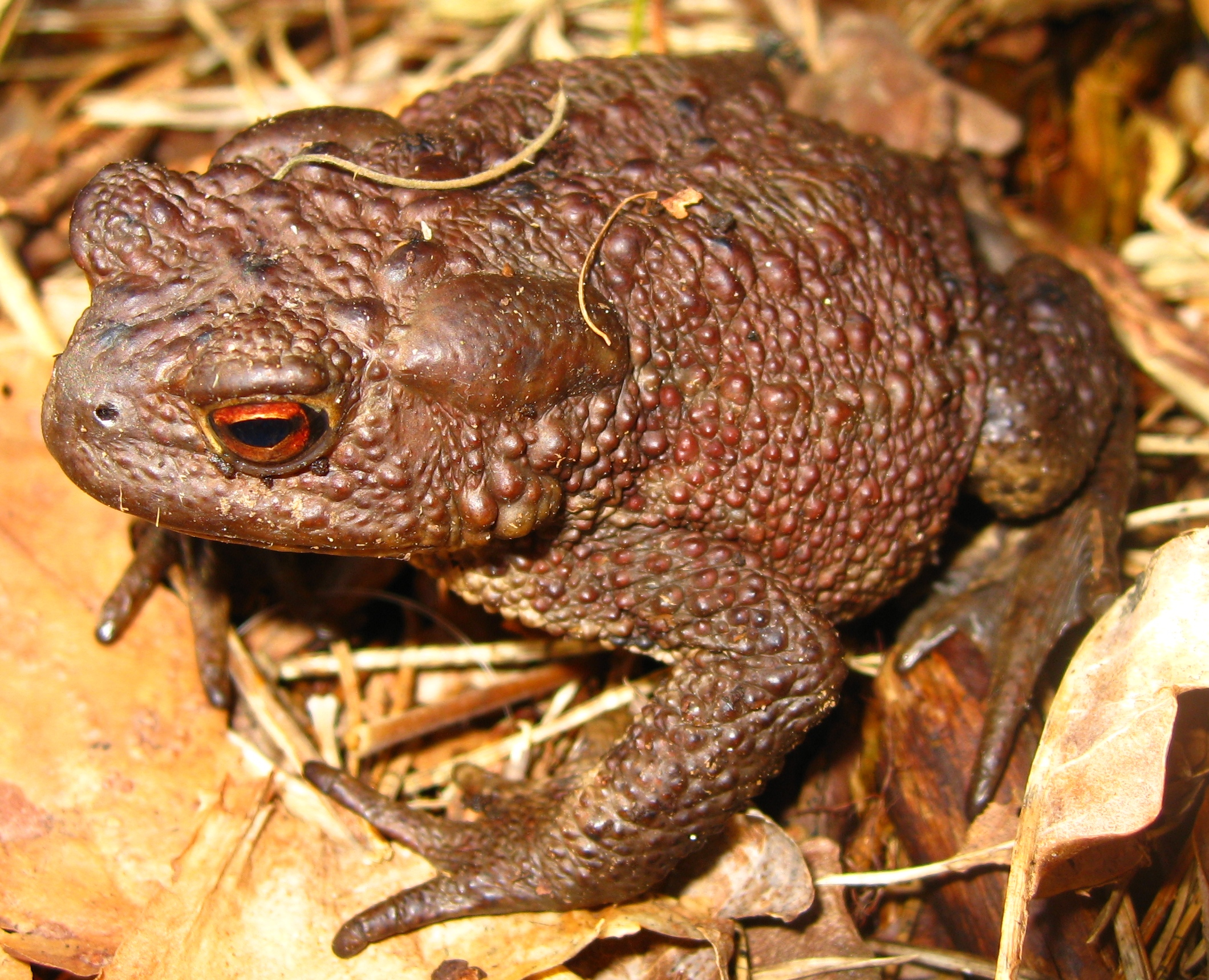
Common Toad. Photo Taken by Karamel. https://upload.wikimedia.org/wikipedia/commons/9/93/Common_Toad_%28Bufo_bufo%29.jpg
Over the last couple of decades, amphibians globally have experienced huge population declines that have resulted in the extinction of some species (AmphibiaWeb, 2017). Amphibians are ectothermic, meaning they cannot regulate their own body temperature. They instead rely on external sources like the sun to thermoregulate. This means that amphibians are particularly sensitive to changes in their environment. With global temperatures rising due to global warming, the summers are becoming longer and the winters are becoming shorter and milder (Reading, 2006). The hibernation periods of toads are disrupted in the process, leading to detrimental and even fatal health complications for toads.
In a study on Common Toads, a widespread species in Europe, Jorgenson (1986) found that female toads who were given unlimited access to food during the winter and prevented from hibernating, grew slower and died at higher rates than female toads that hibernated. He also found that female toads reached reproductive age younger and at a smaller size than female toads that hibernated. A study conducted by Reading (2006) on the same species yielded the same results and found that mild winters caused female toads to reach breeding age at smaller sizes. This can be detrimental to toad populations because the amount of eggs a mother toad lays is dependent on how big she is.
Amphibians have structures called fat bodies that allow them to store energy that can be used while they hibernate (Reading, 2006). When the winters are cold, metabolism slows down and energy usage is minimal. However, when the winters are only mild, the toad’s metabolism doesn’t slow down enough to minimize energy usage. The toads emerge hibernation with less energy availability and their body condition is decreased. In some cases, the toads’ energy reserves are depleted before they emerge from hibernation and they die in the process (Reading, 2006).
Unfortunately, global mean temperatures are expected to rise by 1-7 in the coming years (IPCC, 2001). The Common Toad and other amphibian species populations will likely face more challenges as temperatures continue to rise. In order to help these species see the future, we can continue to study them and their physiological limitations further. Although amphibians may not seem important enough to preserve, we must remember that they help control mosquito populations that can reduce our risk of disease exposure (Morris, 2020).
References
AmphibiaWeb: Worldwide Amphibian Declines (2024). https://amphibiaweb.org/declines/ (last accessed 12 February 2024).
External and internal control of patterns of feeding, growth and gonadal function in a temperate zone anuran, the toad Bufo bufo – Jørgensen – 1986 – Journal of Zoology – Wiley Online Library (2024). https://zslpublications.onlinelibrary.wiley.com/doi/abs/10.1111/j.1469-7998.1986.tb03631.x?casa_token=mZ2kbsVtPwQAAAAA:WkOXqMUoUJ2XXl-546g0FEczyBwOPNJxCTVoN7fRJk5ghTBgPCo6SseiegGljrfTahwqCbLqSivC4bM (last accessed 12 February 2024).
Kerlin KE (2020) Amphibian Declines Affect Human Health. UC Davis. https://www.ucdavis.edu/climate/what-can-i-do/amphibian-declines-affect-human-health (last accessed 12 February 2024).
Reading CJ (2007) Linking global warming to amphibian declines through its effects on female body condition and survivorship. Oecologia 151: 125–131.
Watson RT, Albritton DL, Intergovernmental Panel on Climate Change, Intergovernmental Panel on Climate Change, Intergovernmental Panel on Climate Change, eds. (2001) Climate Change 2001: Synthesis Report. Cambridge University Press, Cambridge ; New York.


 Figure 1: Range map for the Eastern Massasauga
Figure 1: Range map for the Eastern Massasauga











